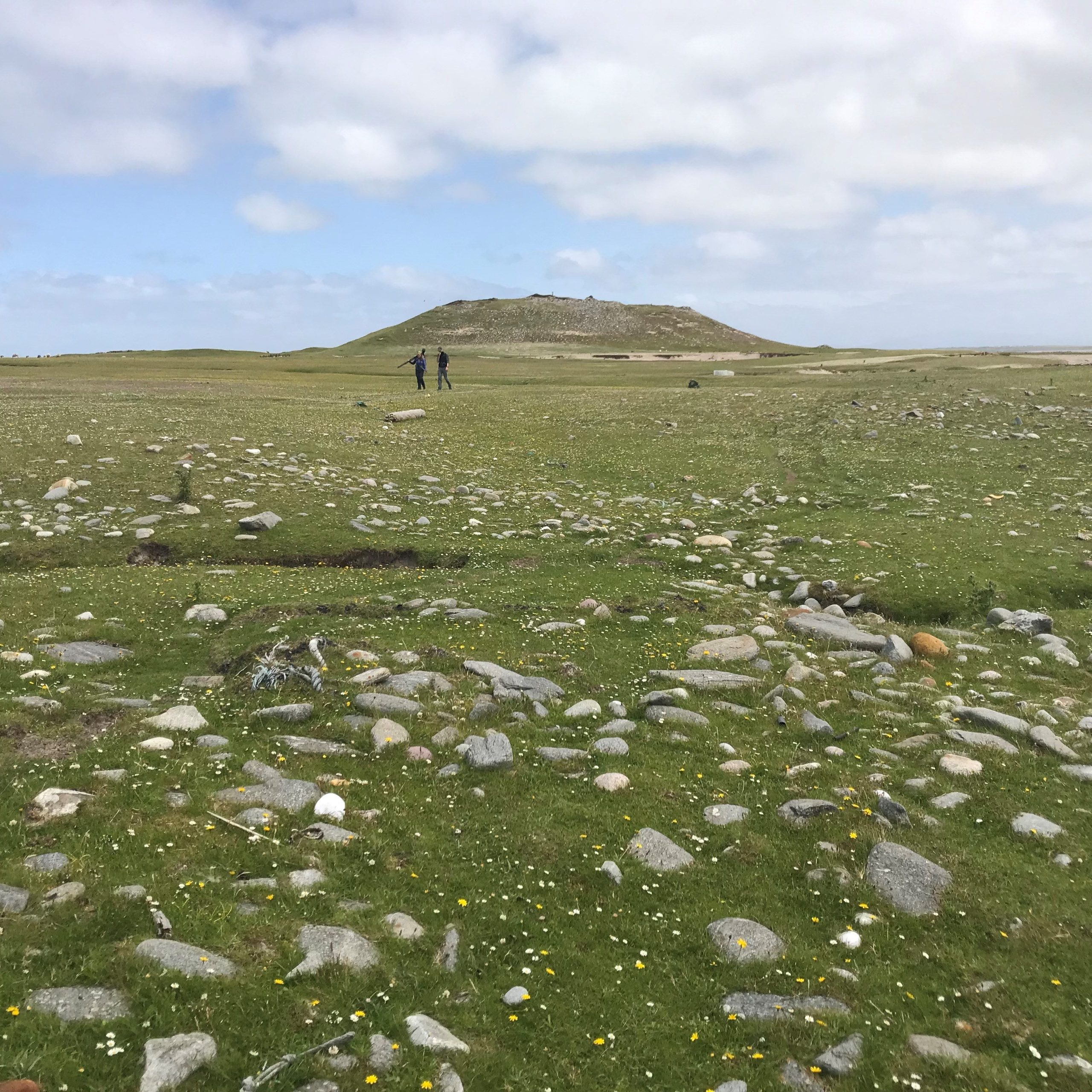Inis Cé – Inishkea North and South island (Inishkea Islands SAC and Inishkea Islands SPA)
The Inishkea Islands are two low-lying, exposed and wind-swept islands separated by a narrow channel, approx. 5km off the Mullet Peninsula. The islands were populated until 1932, and the remains of two villages are still visible. Today, grazing is the main land use on the islands with growing recreational activities facilitated by boat trips from nearby Blacksod and Doogort.
The north island, Inishkea North, is dominated by Machair and includes a small lake. The south island, Inishkea South, is higher with Machair on the low areas and heath on the higher levels. Both islands have a small sandy bay on the eastern side. In the early 2000’s, the Machair here was considered to be one of the finest examples of the habitat nationally. However, the condition of the Machair has since declined due to heavy grazing pressure.
The Inishkea Islands have long been recognised as one of the most important sites for breeding wader populations in Ireland. In 1985, a total of 64 breeding wader pairs were recorded, and the population increased to a peak of 377 pairs in 2009. However, by 2019, the total population on both islands had declined to 68 pairs. The Dunlin population on the Inishkea Islands is considered critically low and in need of urgent conservation action. Similarly, Lapwing increased from 14 pairs in 1996 to 95 pairs in 2009, and subsequently declined to just 12 pairs by 2019. Despite the trends, the islands support up to 6% of the national breeding population of Dunlin, as well as 2% of the national breeding Lapwing population. Red-necked Phalaropes, an Annex I listed species, have also recently recolonized the site, highlighting the site’s potential for restoration.
The islands are also one of the most important wintering sites for Barnacle Goose in Ireland, supporting an internationally important population, and they are also a traditional site for breeding terns, with particularly important populations (i.e. >5% of national totals) for Common Tern.
Although the invertebrate records for the Inishkea island are sparse and do not include pollinators, the flower rich sward that was present up to 20 years ago is likely to have supported number of species. However, the site is now characterised by a homogeneous low sward due to excessive grazing, thereby limiting severely the diversity of pollinators the site can support.

